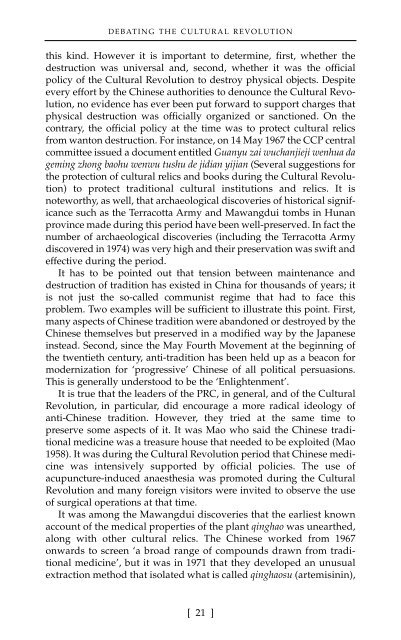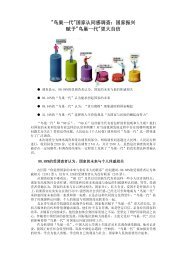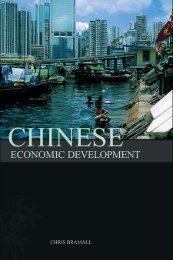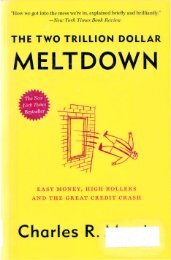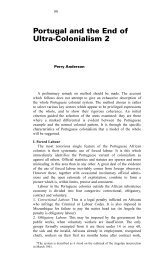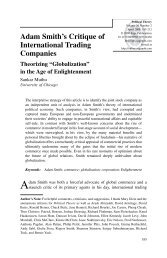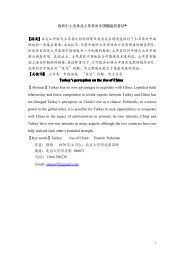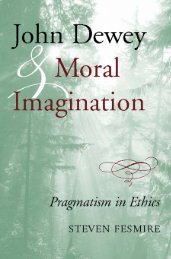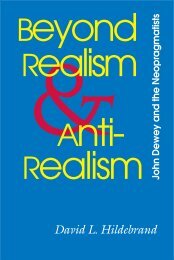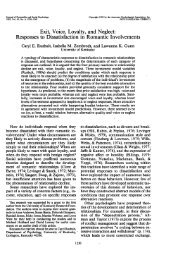Battle for China's Past : Mao and the Cultural Revolution
Battle for China's Past : Mao and the Cultural Revolution
Battle for China's Past : Mao and the Cultural Revolution
You also want an ePaper? Increase the reach of your titles
YUMPU automatically turns print PDFs into web optimized ePapers that Google loves.
DEBATING THE CULTURAL REVOLUTION<br />
this kind. However it is important to determine, first, whe<strong>the</strong>r <strong>the</strong><br />
destruction was universal <strong>and</strong>, second, whe<strong>the</strong>r it was <strong>the</strong> official<br />
policy of <strong>the</strong> <strong>Cultural</strong> <strong>Revolution</strong> to destroy physical objects. Despite<br />
every ef<strong>for</strong>t by <strong>the</strong> Chinese authorities to denounce <strong>the</strong> <strong>Cultural</strong> <strong>Revolution</strong>,<br />
no evidence has ever been put <strong>for</strong>ward to support charges that<br />
physical destruction was officially organized or sanctioned. On <strong>the</strong><br />
contrary, <strong>the</strong> official policy at <strong>the</strong> time was to protect cultural relics<br />
from wanton destruction. For instance, on 14 May 1967 <strong>the</strong> CCP central<br />
committee issued a document entitled Guanyu zai wuchanjieji wenhua da<br />
geming zhong baohu wenwu tushu de jidian yijian (Several suggestions <strong>for</strong><br />
<strong>the</strong> protection of cultural relics <strong>and</strong> books during <strong>the</strong> <strong>Cultural</strong> <strong>Revolution</strong>)<br />
to protect traditional cultural institutions <strong>and</strong> relics. It is<br />
noteworthy, as well, that archaeological discoveries of historical significance<br />
such as <strong>the</strong> Terracotta Army <strong>and</strong> Mawangdui tombs in Hunan<br />
province made during this period have been well-preserved. In fact <strong>the</strong><br />
number of archaeological discoveries (including <strong>the</strong> Terracotta Army<br />
discovered in 1974) was very high <strong>and</strong> <strong>the</strong>ir preservation was swift <strong>and</strong><br />
effective during <strong>the</strong> period.<br />
It has to be pointed out that tension between maintenance <strong>and</strong><br />
destruction of tradition has existed in China <strong>for</strong> thous<strong>and</strong>s of years; it<br />
is not just <strong>the</strong> so-called communist regime that had to face this<br />
problem. Two examples will be sufficient to illustrate this point. First,<br />
many aspects of Chinese tradition were ab<strong>and</strong>oned or destroyed by <strong>the</strong><br />
Chinese <strong>the</strong>mselves but preserved in a modified way by <strong>the</strong> Japanese<br />
instead. Second, since <strong>the</strong> May Fourth Movement at <strong>the</strong> beginning of<br />
<strong>the</strong> twentieth century, anti-tradition has been held up as a beacon <strong>for</strong><br />
modernization <strong>for</strong> ‘progressive’ Chinese of all political persuasions.<br />
This is generally understood to be <strong>the</strong> ‘Enlightenment’.<br />
It is true that <strong>the</strong> leaders of <strong>the</strong> PRC, in general, <strong>and</strong> of <strong>the</strong> <strong>Cultural</strong><br />
<strong>Revolution</strong>, in particular, did encourage a more radical ideology of<br />
anti-Chinese tradition. However, <strong>the</strong>y tried at <strong>the</strong> same time to<br />
preserve some aspects of it. It was <strong>Mao</strong> who said <strong>the</strong> Chinese traditional<br />
medicine was a treasure house that needed to be exploited (<strong>Mao</strong><br />
1958). It was during <strong>the</strong> <strong>Cultural</strong> <strong>Revolution</strong> period that Chinese medicine<br />
was intensively supported by official policies. The use of<br />
acupuncture-induced anaes<strong>the</strong>sia was promoted during <strong>the</strong> <strong>Cultural</strong><br />
<strong>Revolution</strong> <strong>and</strong> many <strong>for</strong>eign visitors were invited to observe <strong>the</strong> use<br />
of surgical operations at that time.<br />
It was among <strong>the</strong> Mawangdui discoveries that <strong>the</strong> earliest known<br />
account of <strong>the</strong> medical properties of <strong>the</strong> plant qinghao was unear<strong>the</strong>d,<br />
along with o<strong>the</strong>r cultural relics. The Chinese worked from 1967<br />
onwards to screen ‘a broad range of compounds drawn from traditional<br />
medicine’, but it was in 1971 that <strong>the</strong>y developed an unusual<br />
extraction method that isolated what is called qinghaosu (artemisinin),<br />
[ 21 ]


